How to Dehydrate Raspberries and Make Raspberry Powder
Want to keep your raspberries longer? Dehydrate raspberries to have throughout the year. Follow these easy steps to dehydrate raspberries and fill your pantry!
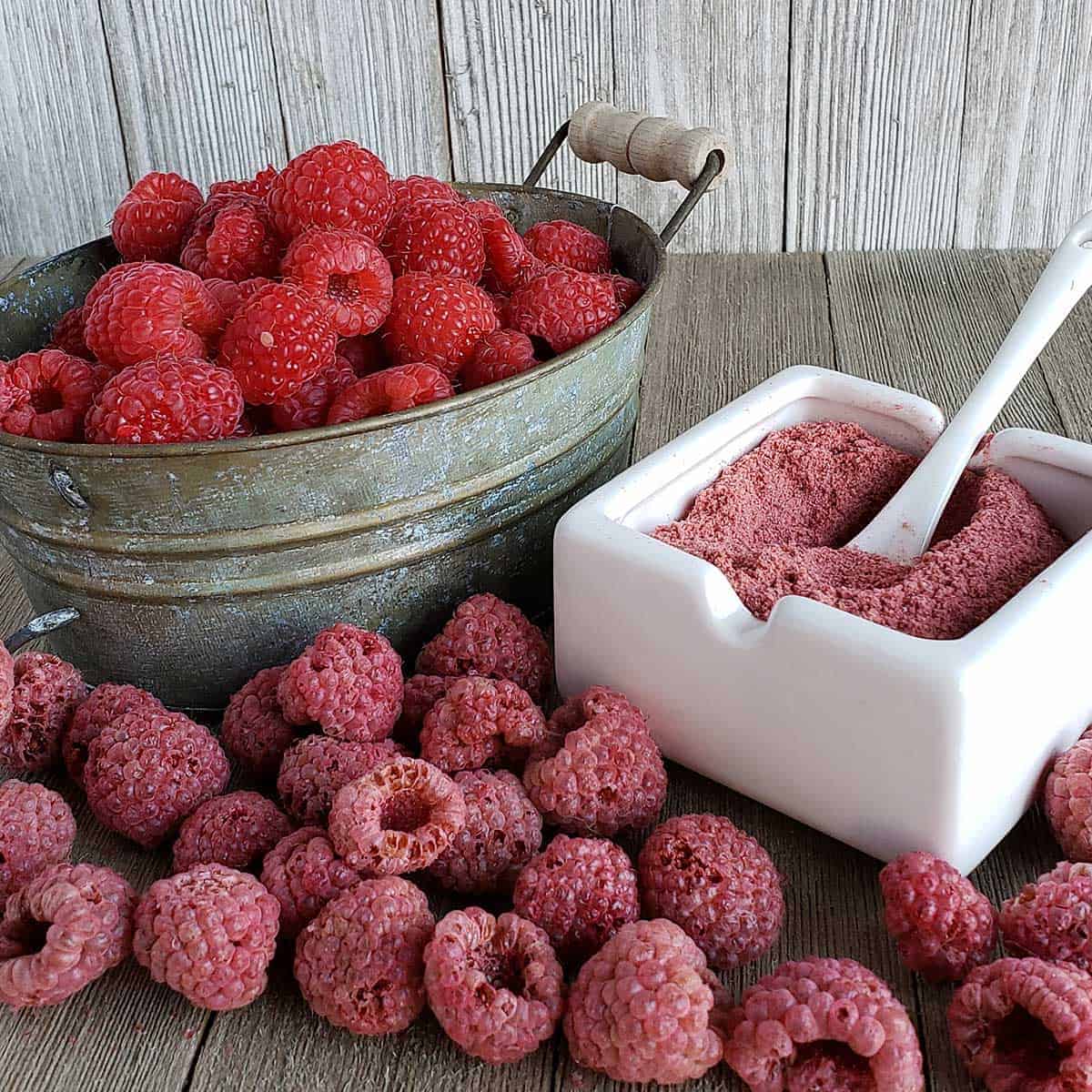
Raspberries, like blackberries, usually last just a few days, and then turn to moldy mush in the blink of an eye. They’re ripe…and then *poof* they’re not. This is the mold monster.
Don’t let the mold monster win.
If you love raspberries and want to keep them longer than just a few days, your choices are as follows
How to Dehydrate Raspberries
Quick Instructions:
- Inspect for and remove any bad raspberries or debris;
- Rinse or soak thoroughly. I use a 3:1 vinegar/water wash;
- Shake gently to drain, then lay out on towels to dry;
- Lay raspberries on racks for your dehydrator;
- Dehydrate at 125F | 52C for 24-36 hours or until paper dry. (Typically you dry fruit at 135F, but I have found 125F works best for raspberries and blackberries.)
Step 1: Inspect Raspberries
It’s important to remove any bad raspberries that may be developing mold. Remove any debris as it is not something you want in your final powder.
Step 2 Wash Raspberries
Rinsing thoroughly, or soaking if you choose, not only helps rinse away pesticides and other organic matter, but also helps remove mold spores that may be settling on your fruit.
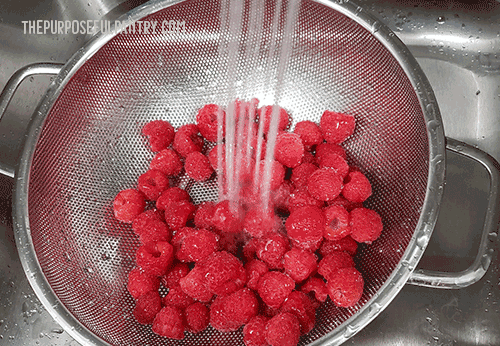
Step 3: Dry Raspberries
Since raspberries have an opening that allows water to collect, gently shake raspberries in a colander, run through a salad spinner, or layout on towels to allow water to evaporate. They do not have to be perfectly dry, but get as much moisture out as you can.
Step 4: Place on Trays
Whether you’re using an Excalibur 9-tray, a Nesco FD-80 or other dehydrator, lay your raspberries out on racks. You may choose to use a liner for your racks in case there is some juice that sticks during the process, but it isn’t necessary.
If you notice, I am not fussed with the way these look. Some like to place with the opening down to help with dehydrating time. I’ve never found it to help. Just give them space.
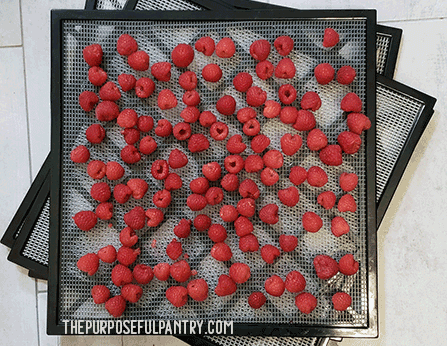
*if you are dehydrating frozen raspberries, DO place protective liners on each tray as the cells of the fruit are damaged in the freezing process, and you will have a lot of juice. I would suggest defrosting first, then putting your raspberries in the dehydrator to dry to keep the mess at a minimum (but still protect the machine with liners).
Step 5: Dry at 125°F/52°C
Drying time can take from 18-36+ hours. You may have to go longer if your raspberries are big and plump, you have humid weather, or your machine is crammed full.
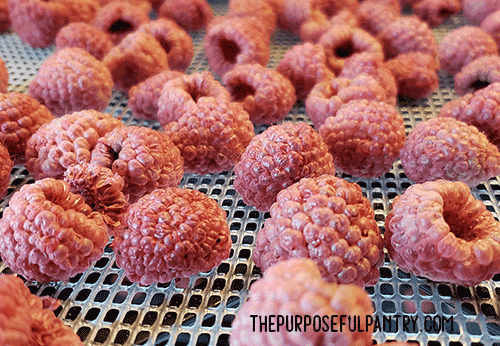
*Note: While fruit is typically dried at 135F, I prefer to dry my raspberries and blackberries a little cooler at 125F to help them dry a little slower. Because they can be problematic in dying into hard little nuggets, I find drying them a little slower helps them dry more evenly and be more beneficial to the powdering process in the end.
TIP>> Budget-friendly Dehydrator Tools
Step 6: Dryness test
Step 7: Condition
Conditioning – once you’ve dehydrated your raspberries, you need to condition them for about a week. Place in an airtight canning jar, and shake the jar once or twice a day. Conditioning is the act of allowing the humidity level (preferably less than 20%) to equalize amongst all the fruit in the jar as some may hold more moisture than others.
If you see condensation on the inside of the jar, throw them back into the dehydrator and dry longer. If you see no condensation, continue with long-term storage.
Step 8: Store
Store your dehydrated raspberries for up to a year in an airtight container. Nothing else is needed.
Vacuum sealing: You can watch this video on how I vacuum seal my blackberries for long-term storage. You can do it for all of your dehydrated fruits and vegetables.
LEARN MORE: How to Dehydrate Pomegranates
However, there is one addition to the video that I did not make clear. If you are storing in regular mouth jars, instead of a wide mouth, use two lids through the process. The two lids allow for better seating of the bottom lid and better overall suction. Then simply remove the top lid to use again another day.
Either way, you’ll need these jar attachments to use this storage method. If you don’t have a full-sized vacuum sealer, you can use this hand-held model to do the same thing.
Dehydrating Raspberries Q&A
Can I dehydrate frozen raspberries?
Yes, but I do suggest you allow them to come to room temperature on paper towels (or lint-free towels you’re willing to be stained), to allow the juice to be absorbed. The cell structure of the fruit is slightly damaged in the freezing process, so they will be juicy and can make a mess in your dehydrator. You’ll want to go ahead and use liners for your trays
How to use dried raspberries
- Throw a handful into pancake or waffle batters (you might want to chop them) and allow them to sit for a few minutes before cooking
- Add to water kefir or other drinks to flavor
- Snack on them – they will be tart, but if you get in season good raspberries, the tart/sweet is perfect. Off-season raspberries are better as a powder
- Use to make dressings
- Make into a powder for even more uses (See below)
What kind of dehydrator should I use?
Ideally, a dehydrator should have a temperature setting that allows you to go from 95F-160F (35-70C), and is powerful enough to run with consistent heat for up to two days (I look for at least 600 watts). You also want trays that are not thin plastic that might break quickly. I use an Excalibur 9-tray and a Cosori .
If you’d like other recommendations for the best dehydrators in every budget, I’ve got you covered, too.
►TIP: See my full list of recommendations here.
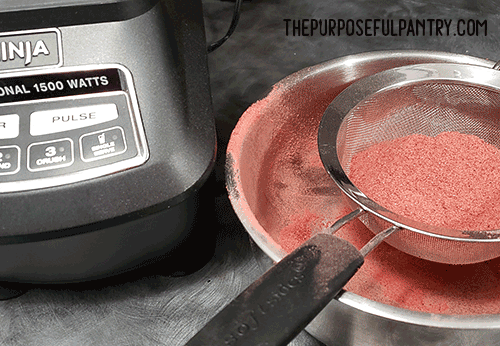
How to Powder Raspberries
- Place raspberries in a blender or coffee grinder (I really love this grinder as it has a removable bowl for easier cleaning);
- Pulse until powdered;
- Run through a fine-mesh strainer to remove seeds;
- Store in an airtight container with a desiccant pack to absorb moisture.
Tip – watch this video to see the complete process.
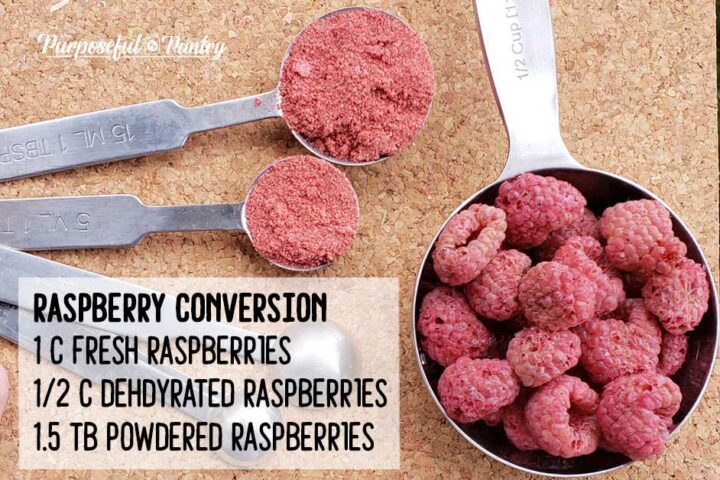
How to Dehydrate Raspberries and Make Raspberry Powder Video
How to Use Raspberry Powder
- Mix into yogurt
- Add to oatmeal
- Use to flavor salad dressings
- Sprinkle onto cupcake icing instead of sugars
- Use as a natural food coloring
- Add to milk instead of chocolate
- Use as a flavoring in pudding or chia pudding
- Add 1/2 to 1 tsp to hot cocoa for a pleasant twist of fruity flavor
- Add as a flavor boost to muffins or smoothies
READ: Even More Ideas on How to Use Dehdyrated Fruit Powders
Are there other ways to preserve raspberries?
- Dehydrate Raspberries
- Freeze Raspberries
- Can Whole Raspberries or Raspberry Jam
- Freeze-dry raspberries
Learn More About Dehydrating Fruits:

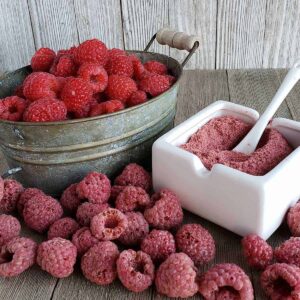
HOW TO DEHYDRATE RASPBERRIES and Make Raspberry Powder
Equipment
Instructions
- Inspect raspberries and remove any bad fruit or debris;
- Rinse or soak thoroughly. I use a 3:1 vinegar/water wash;
- Shake gently to drain, then lay out on towels to dry;
- Lay raspberries on racks for your dehydrator;
- Dehydrate at 135F for 24-36 hours or until paper dry.
- Condition for a week (See blog notes)
- Store in airtight container for up to twelve months. Preferably vacuum seal for long-term.
POWDER DEHYDRATED RASPBERRIES
- Place raspberries in a blender or coffee grinder (I really love this grinder as it has a removable bowl for easier cleaning);
- Pulse until powdered;
- Run through a fine mesh strainer to remove seeds;
- Store in an airtight container with a desiccant pack to absorb moisture.
Video
Darcy’s Tips
Nutritional information is an estimation only. Nutrient information for dehydrated foods is based on fresh. Use 1/4 of the servicing size for the same nutrient information. Thus 1 Cup of fresh fruit has the same sugars as 1/4 dried.
©ThePurposefulPantry. Photographs and content are copyright protected. Sharing of this recipe’s link is both encouraged and appreciated. Copying and/or pasting full recipes to any social media is strictly prohibited.

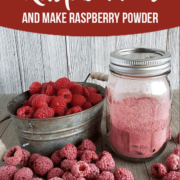

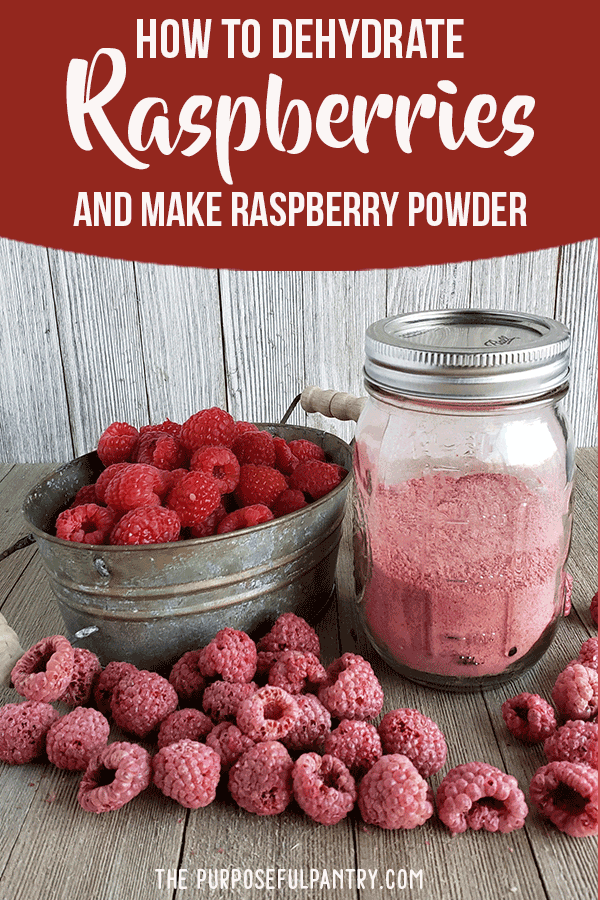
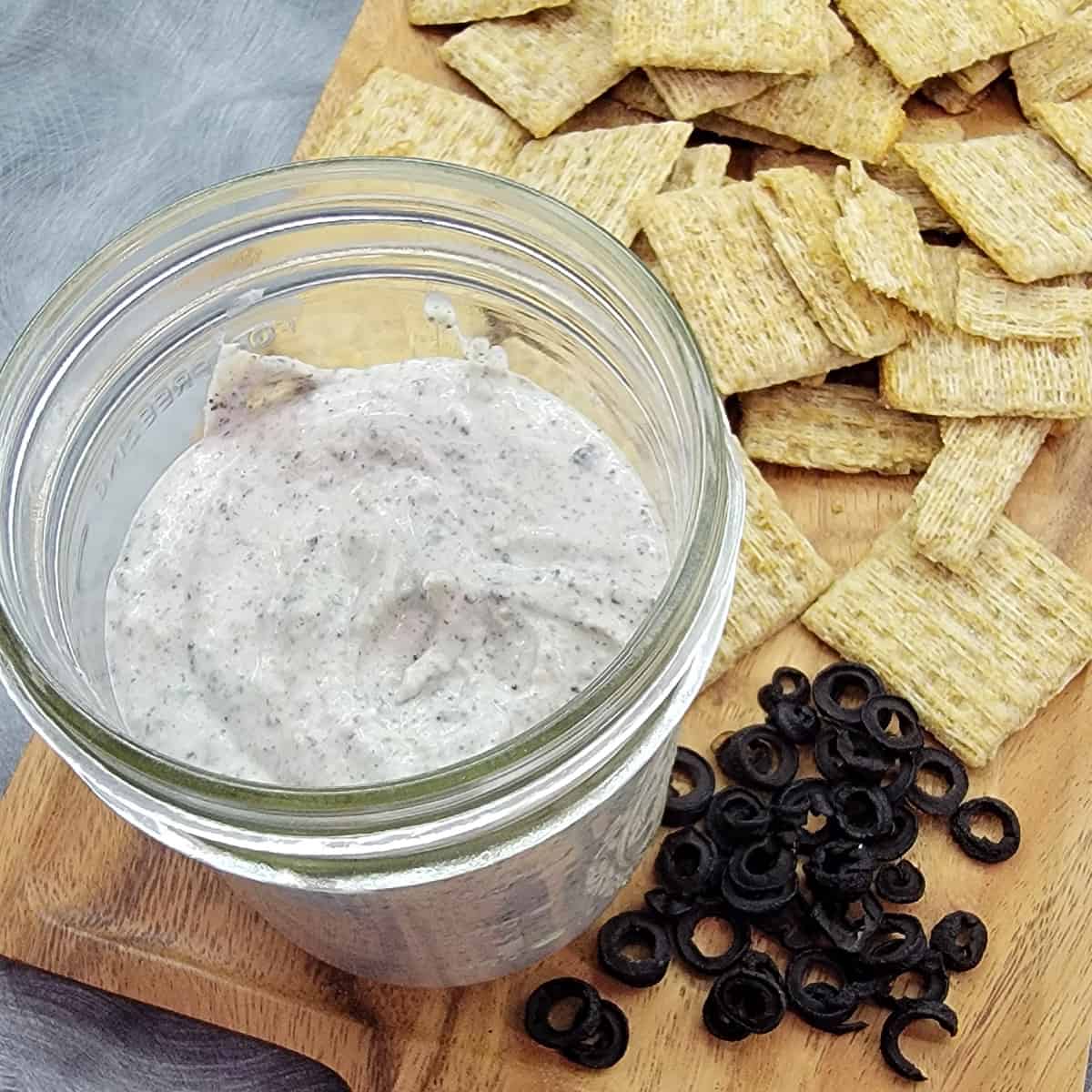
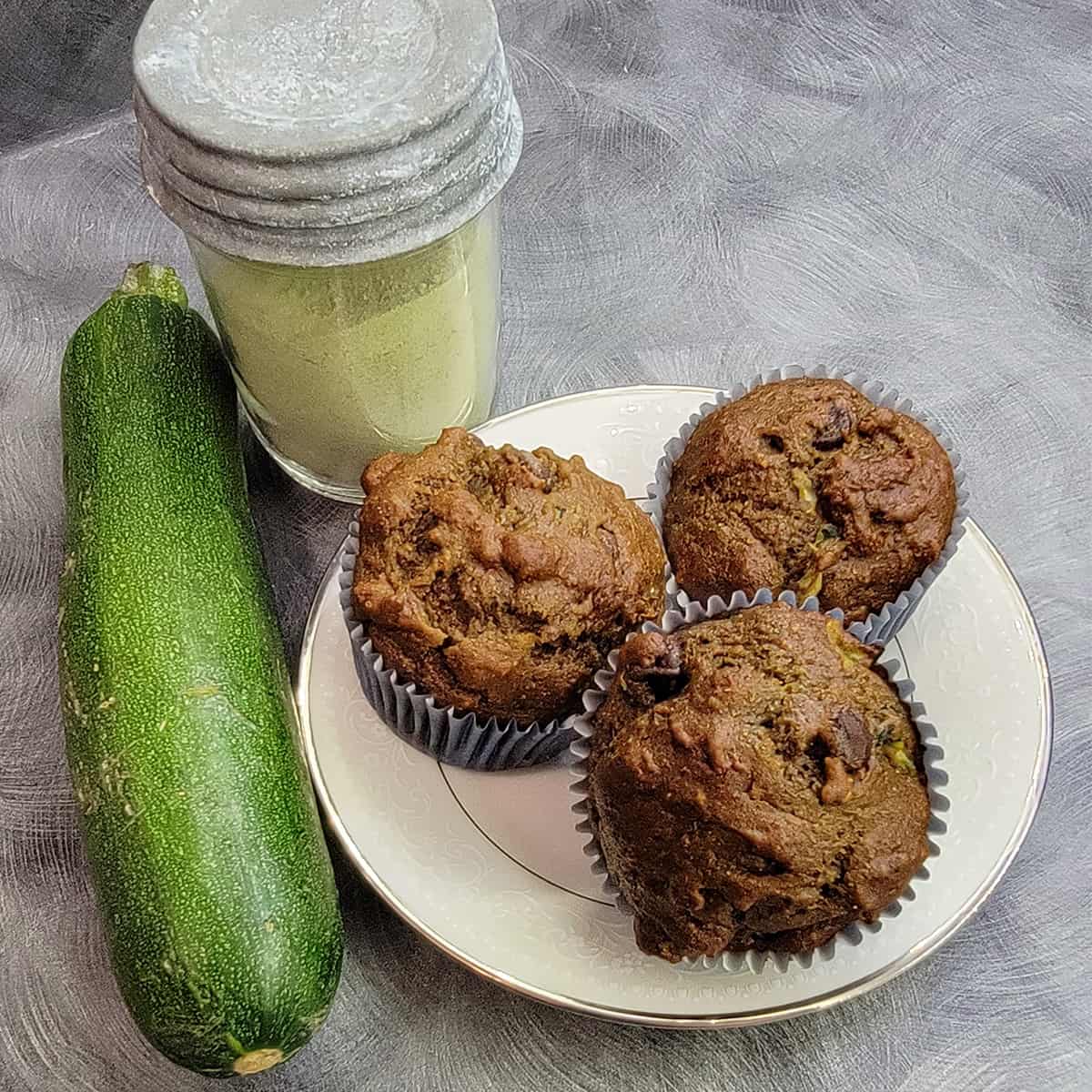
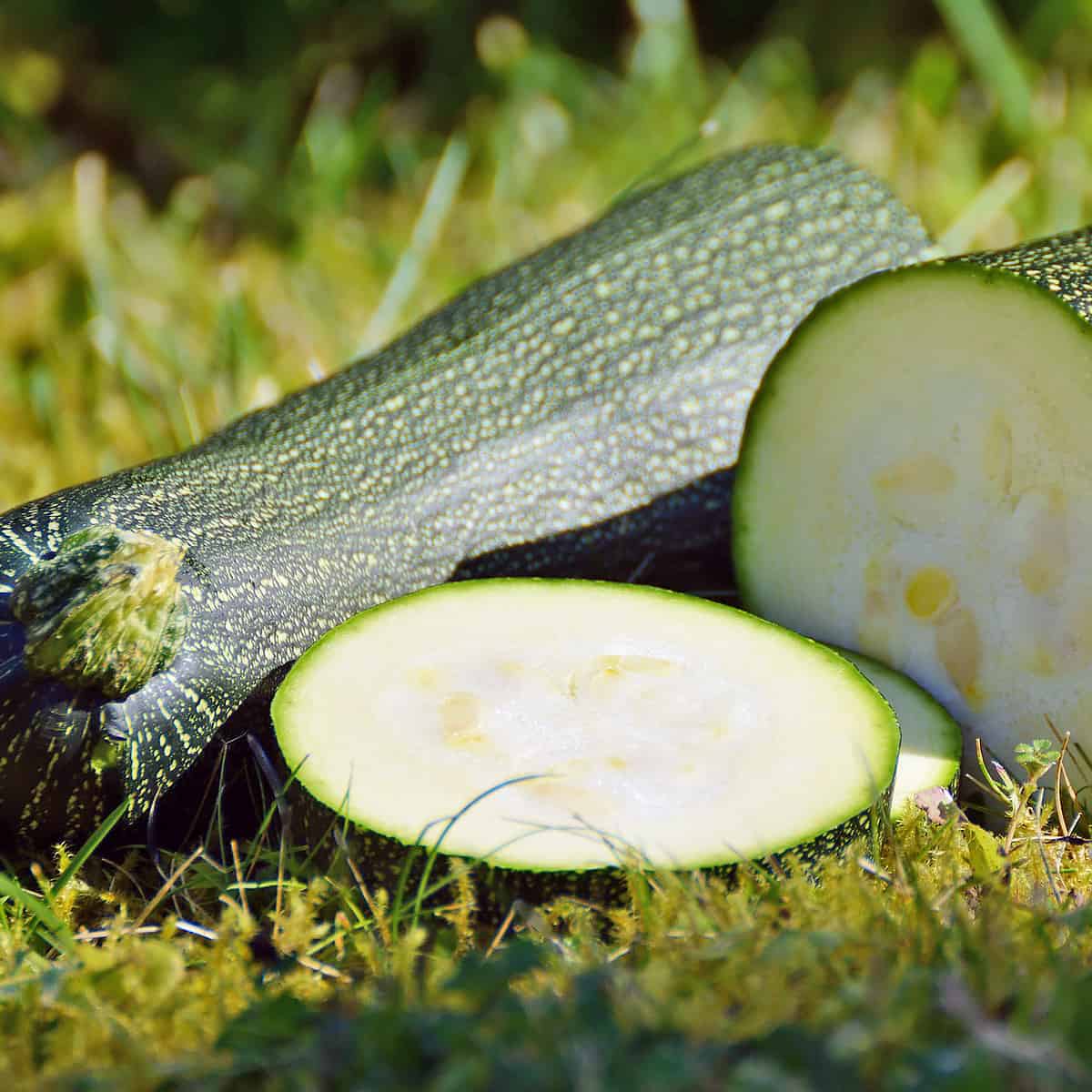
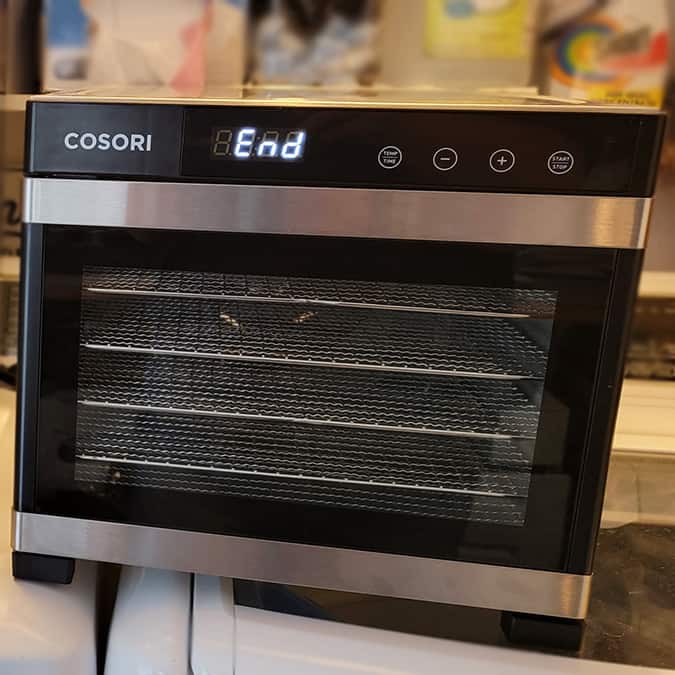
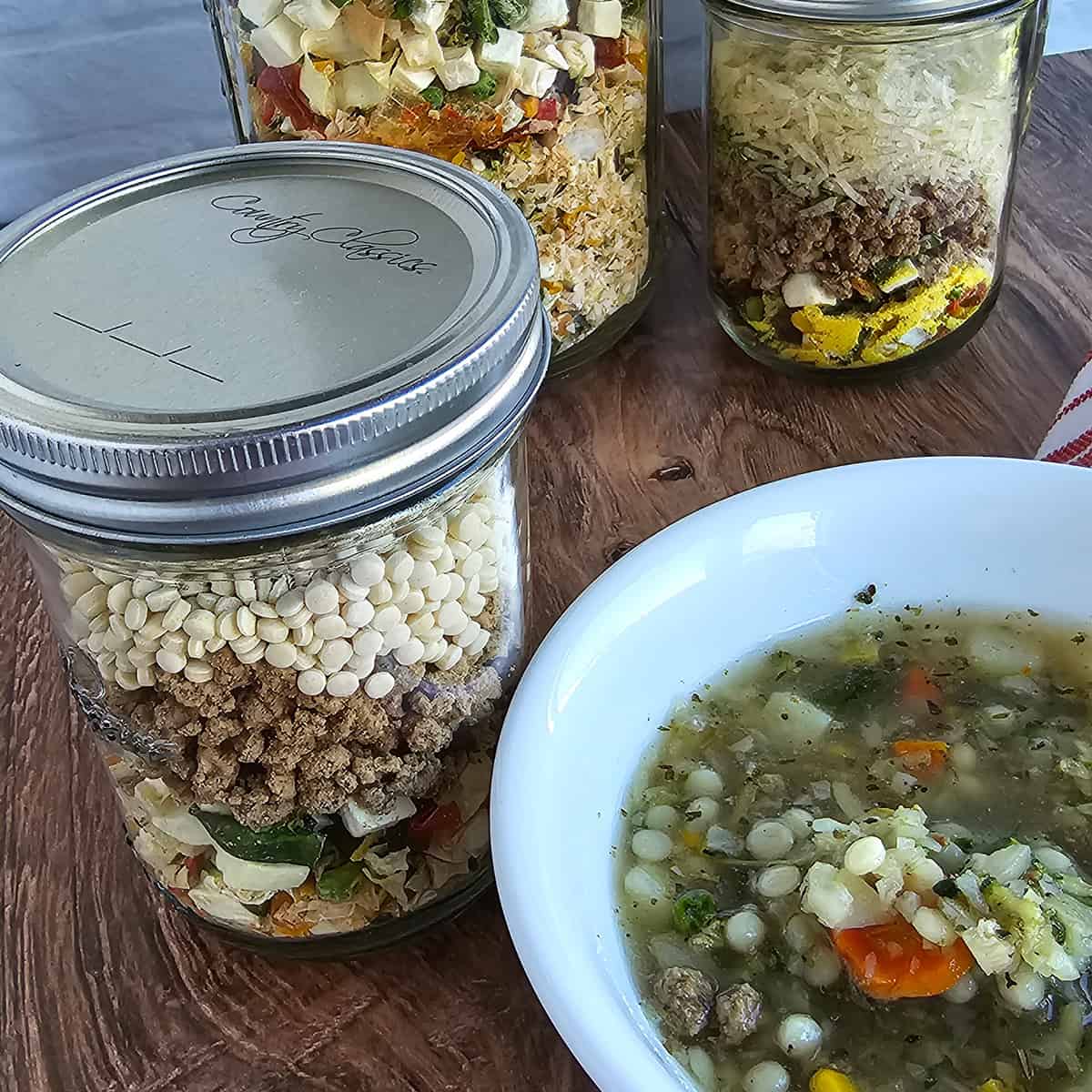
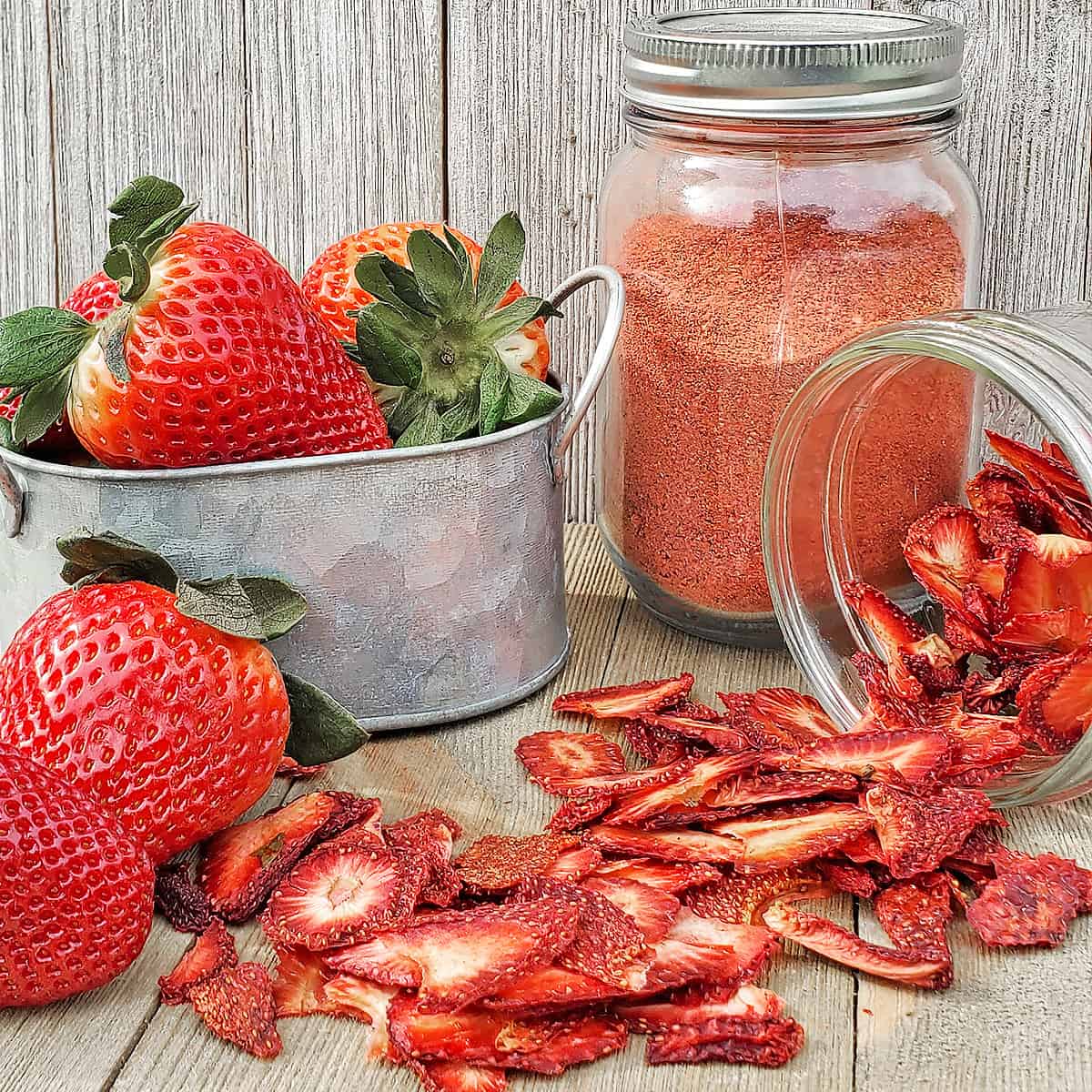
Is it 3 parts vinegar to 1 part water to soak in?
That’s what I use – the important thing is to not think that a glug of vinegar is going to be enough. It doesn’t have to be exact.
I need a 1/4 cup raspberry powder for a recipe…any idea about how many grams of powder that equals?
Using a conversion on Google – about 25 grams, give or take a few.
I’ve had two batches turn into raspberry rocks that won’t powder. How do you know when they’re dry enough and not over dry the berries?
You can’t over dry the berries, especially if you are going for powder. You may need to reduce the amount in the grinder you are using, pulse like mad, and then add a little more in each time. Some grinders don’t work well when they are too full or too empty.
Do you know if you can still make jam or jelly out of these once dehydrated?
You can rehydrate them and do so, but the volume will decrease a bit. But I would freeze them instead if your intention is jam/jelly later.
Could you give me an idea of how many raspberries you need to make what amount of powder? I’d hate to purchase 2 small baskets and end up the tad bit of powder. Thank you for any information you can share.
Also – while you may not get a lot for this time, you can always save up the dehydrated raspberries and wait until you’ve collected a couple of more bathches (like when they go on sale), and then powder them at that point.
Great video thanks for sharing . I think ill give that a try 🙂
Let me know how it goes for you, Cora!
I am just getting started on collecting equipment for dehydrating and found your videos very informative. Will be watching more, Thank you for this.
Definitely keep an eye out — more are on the way! Let me know if you have any questions!